In the center of Beijing, there is a vast sea of temples, that is, the Imperial Palace. The solemn hall covered with glazed tiles bears witness to the magnificence and resplendence of the civilized country; the deep courtyard and the long eternal lane tell the vicissitudes of hundreds of years of wind and rain. Every place here is a masterpiece of art with unique ingenuity, and every place has endless stories.

The Imperial Palace, also known as the Forbidden City, is located in the center of Beijing. It was the imperial palace of the Ming and Qing dynasties. It covers an area of more than 720000 square meters, construction area of about 150000 square meters, there are more than 9000 palaces, known as “the sea of temples”, magnificent and spectacular. Whether it is the plane layout, the three-dimensional effect, or the majestic form, it can be called an unparalleled masterpiece.
On the whole, the Forbidden City is divided into three roads: central, eastern and western. Among them, the main role is the axis of the middle road running through the north and south. This axis from south to north, first arranged five city gates, they are Daming Gate (called Daqing Gate in Qing Dynasty, Zhengyang Gate today), Chengtian Gate (Tiananmen Square after Qing Dynasty), Duanmen, Wu Men and Taihe Gate. To the north of the Gate of Supreme Harmony are three main halls: the Hall of Supreme Harmony, the Hall of Zhonghe and the Hall of Protection and Harmony, where the emperor held the grand ceremony and summoned his ministers. Further north is the inner court, which centers on Palace of Heavenly Purity, Jiaotai Hall and Kunning Palace, where emperors live and handle daily affairs, and where princes live and sacrifice to gods.
The main entrance of the Forbidden City is the Meridian Gate. In the Ming and Qing dynasties, there were strict hierarchical rules for going in and out of the Meridian Gate, and the main entrance was only for the emperor. In addition, only the queen could walk once when she married and entered the palace. The top three Jinshi can also go out of the Forbidden City once after the trial release. At ordinary times, civil and military officials go in and out of the east gate, while Wang Duke Qi goes in and out of the west gate. On the 10th of the second month of winter every year, the emperor holds a ceremony to promulgate the almanac at Meridian Gate. Whenever the army made a triumphant return, the emperor would choose a day to hold a ceremony of capture at the Meridian Gate. On the fifteenth day of the first lunar month every year, lights are hung at the Meridian Gate to give banquets to hundreds of officials. the emperor comes to watch the lanterns and write poems with his ministers. In the past, there were often words such as “beheading at Meridian Gate” in TV dramas, but in fact, the front door of the imperial palace in the Ming and Qing dynasties was extremely strict. The prisoner “beheading City Cao” was by no means here, but had to be taken to the execution ground in Chai City (now Xi Si) or Caishikou and other places.
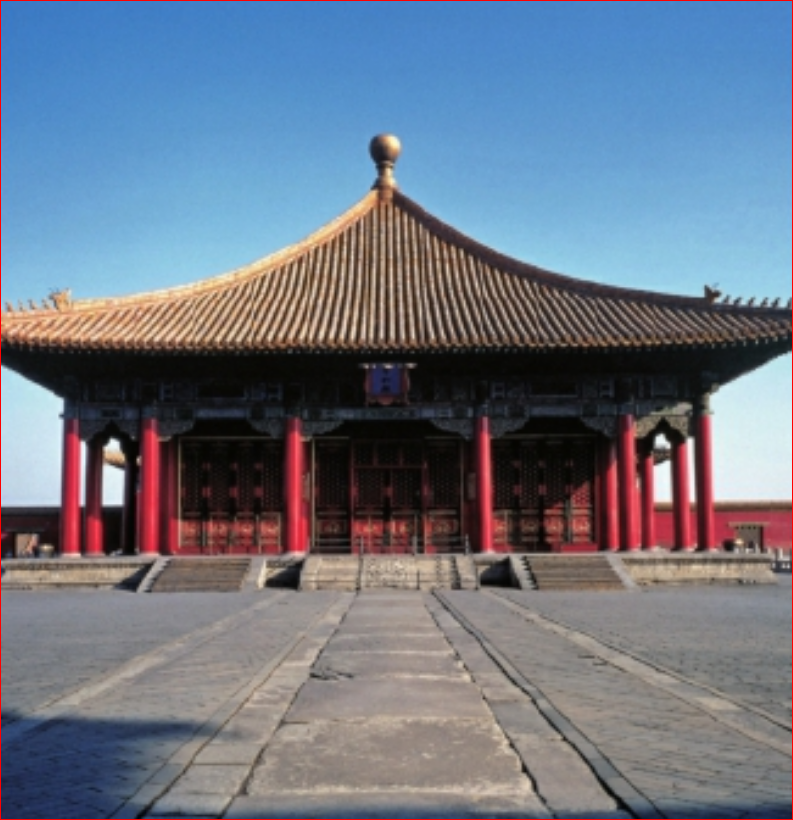
Zhonghe Hall
A solemn and harmonious architectural form.
The architecture of the Imperial Palace embodies the quintessence of Chinese traditional thought and is built strictly according to the imperial capital construction principle of “the former dynasty and the back city, the left, ancestral and right society” in the Book of Zhou Li Kao Gong Ji. The entire Imperial Palace, in the architectural layout, the use of physical changes, ups and downs, combined into a whole. In function, it accords with the hierarchical system of feudal society, and achieves the artistic effect of left-right balance and physical change at the same time.
The front palace of the Imperial Palace, at that time, the architectural shape required magnificent, the courtyard was bright and open, symbolizing the supremacy of the feudal regime, and the Hall of Supreme Harmony was located in the center of the diagonal line of the Forbidden City. The designers of the Imperial Palace thought that this was to show the majesty of the emperor and frighten the world. The rear inner court requires a deep courtyard and compact architecture, so the east and west palaces are all in their own body, each with gates and walls, arranged relatively and in good order, coupled with a pair of palace lamps and beds, embroidering several beds, reflecting the luxury of royal life. After the inner court is the court of the palace. In the back garden, there are green pines and cypresses, exquisite rockery, buildings, pavilions, pavilions and pavilions, which are beautiful and tranquil.
The design and architecture of the Imperial Palace is really an unparalleled masterpiece. Its plane layout, three-dimensional effect, and form of majestic, harmonious, magnificent and magnificent, is the essence of ancient Chinese architectural art.

The side of the Hall of Supreme Harmony
Three majestic halls.
When you enter the Meridian Gate, you really enter the Forbidden City. First of all, you have to cross the Neijinshui River. In front of you is an open square with a palace gate in the middle. All the doors in the Imperial Palace are actually a palace-style building. this door is called Taihe Men. on both sides of the door squats a pair of big bronze lions, which are known as the first lions in China.
The door of Taihe suddenly opened up. In this large courtyard of more than 30,000 square meters, there are the Hall of Supreme Harmony, the Hall of Zhonghe and the Hall of Baohe, collectively known as the three halls. These three halls are the main buildings in the Imperial Palace. They are different in height and shape, and their roofs are also different. They are rich and diverse but not rigid.
The Hall of Supreme Harmony, commonly known as “Jinluan Hall”, is 35.05m high and has a construction area of about 2377 square meters. It is the largest, highest and most magnificent building in the Forbidden City. The Hall of Supreme Harmony is the place where the emperor holds a major ceremony. Such as the emperor ascended the throne, the emperor married, canonized empress, ordered to go out, in addition to the annual Wanshou Festival, New Year’s Day, the Winter Solstice three major festivals, the emperor received congratulations from civil and military officials here, and gave a banquet to the princes and ministers. In the early Qing Dynasty, the temple test of the new Jinshi was held in the Hall of Supreme Harmony. In the later period of Qianlong, it was held in the Hall of Baohe, and “Chuanlu” was still held in the Hall of Supreme Harmony.
Zhonghe Hall, located behind the Hall of Supreme Harmony, is the place where the emperor took a short rest and practiced etiquette before going to the Hall of Supreme Harmony. Before going to the Hall of Supreme Harmony, the emperor would take a short rest here, receive salutes from cabinet ministers and etiquette officials, and then enter the Hall of Supreme Harmony to hold a ceremony. In addition, Zhu Wen should be reviewed here before the emperor sacrifices heaven and earth and the temple.
After Zhonghe Hall, Baohe Hall was used differently in Ming and Qing dynasties. Before the grand ceremony of the Ming Dynasty, the emperor often changed his clothes here. When the empress and crown prince were canonized, the emperor was congratulated in this hall. Every year in the Qing Dynasty, New Year’s Eve, on the fifteenth day of the first lunar month, the emperor gave banquets to foreign clans, princes and first or second grade ministers. The father of the courtesy, the official family banquet and the palace examination of each department are all held in Baohe Hall.
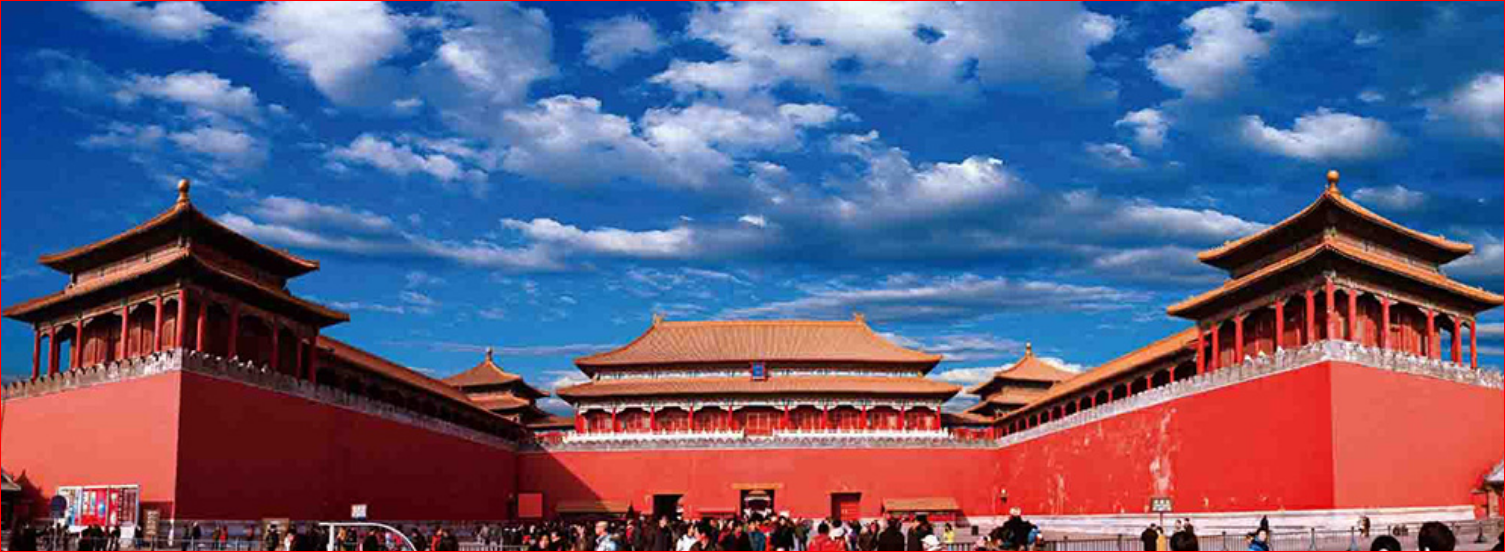
The Meridian Gate.
The Meridian Gate is in the middle of the gatehouse with two pavilions with bells and drums inside. There are rules on when to ring the bell and when to beat the drum. When the emperor sacrifices to the temple, the bell rings at the Meridian Gate; the emperor beats the drum when he sacrifices to the temple; when the emperor goes to the hall to hold a grand ceremony, the bells and drums ring in unison. With such a big three halls, why is there not even a tree around? This is mainly the need to set off the artistic conception. The three halls are the place where the emperor held the grand ceremony, which is not only the center of the whole outer palace building, but also the center of the whole city of Beijing. In order to highlight the majesty of this group of palaces, many architectural techniques have been adopted. one is that there are no trees in the courtyard, starting from Tiananmen Square, the main gate of the Imperial City, through Duanmen, Meridian Gate, and Taihe Men. there are no trees in a series of courtyards (the trees before and after the Duanmen Gate were planted after the Revolution of 1911). At that time, when people went to see the son of Heaven and entered Tiananmen Square, after a long imperial road, marching through the undulating and changing architectural space, they would feel a kind of invisible and growing mental pressure, and finally entered Taihe Men. this mental pressure reached its climax when we saw the wide square and the towering hall towering on the triple platform foundation. If trees are planted in these courtyards, the shade is pleasant and the birds chirp, it will destroy the majestic atmosphere of the court.
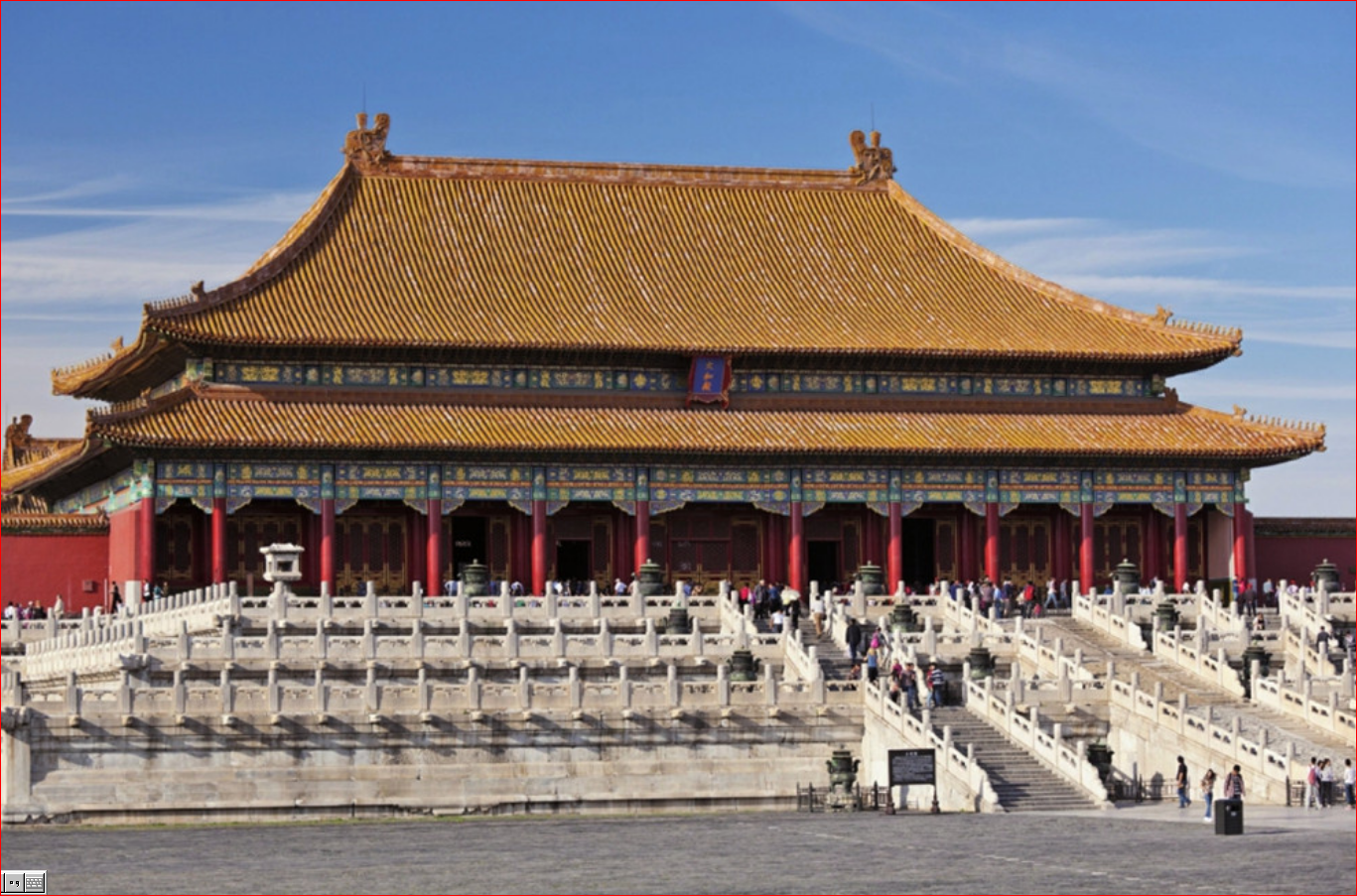
Hall of Supreme Harmony
The magnificent last three palaces.
The inner court is centered on Palace of Heavenly Purity, Jiaotai Hall and Kunning Palace. There are six eastern and western palaces on the east and west wings, which are not only the places where the emperors deal with their daily affairs, but also where the emperors and their concubines live.
The largest building in the inner court is Palace of Heavenly Purity. As the dormitory of the emperors of the Ming Dynasty, a total of 14 emperors once lived here, from Emperor Zhu Di of Yongle to Emperor Zhu Youjian of Chongzhen. Before Emperor Kangxi of the Qing Dynasty, the system of the Ming Dynasty was followed here. During the reign of Shunzhi and Kangxi in the Qing Dynasty, the emperor studied, reviewed and played chapters, summoned officials, received foreign envoys, and held inner court ceremonies and family banquets. From Emperor Yongzheng to Yangxin Hall, it was mainly used for the emperor to summon courtiers, to review and play chapters, to deal with daily government affairs, to meet foreign vassal courtiers and to receive congratulations and feasts at the age of the year.
Jiaotai Dian contains the meaning of “the intersection of heaven and earth, Kangtai and happiness”. It was first established in the Ming Dynasty and rebuilt in the third year of Jiaqing in the Qing Dynasty. It is a square hall with four corners, gold-plated top and dragon and Phoenix decoration. During the Ming and Qing dynasties, Jiaotai Hall was the place where the empress held birthday celebrations. In addition, the “Treasure Seal” of the Qing Dynasty is also collected here.
After passing through the Jiaotai Hall, we came to the Kunning Palace, which was the queen’s dormitory in the Ming Dynasty and the bridal chamber for the emperor’s wedding in the Qing Dynasty. Now the furnishings of Kunning Palace have been restored as they were when Emperor Guangxu got married.
To the north of Kunning Palace is the Imperial Garden. There are towering pines and cypresses, precious flowers and trees, mountains and rocks and pavilions in the imperial garden. The Imperial Garden, formerly known as Gong Hou Yuan, covers an area of more than 11000 square meters and has more than 20 buildings. With Qin’an Hall as the center, the landscape architecture adopts the pattern of primary and secondary complementary, left and right symmetry, compact layout and classical richness. Duixiu Mountain, northeast of the Hall, is built on top of the Taihu Lake stone, and the two pavilions named Wanchun Pavilion and Qianqiu Pavilion can be said to be the most magnificent among the ancient pavilions currently preserved.
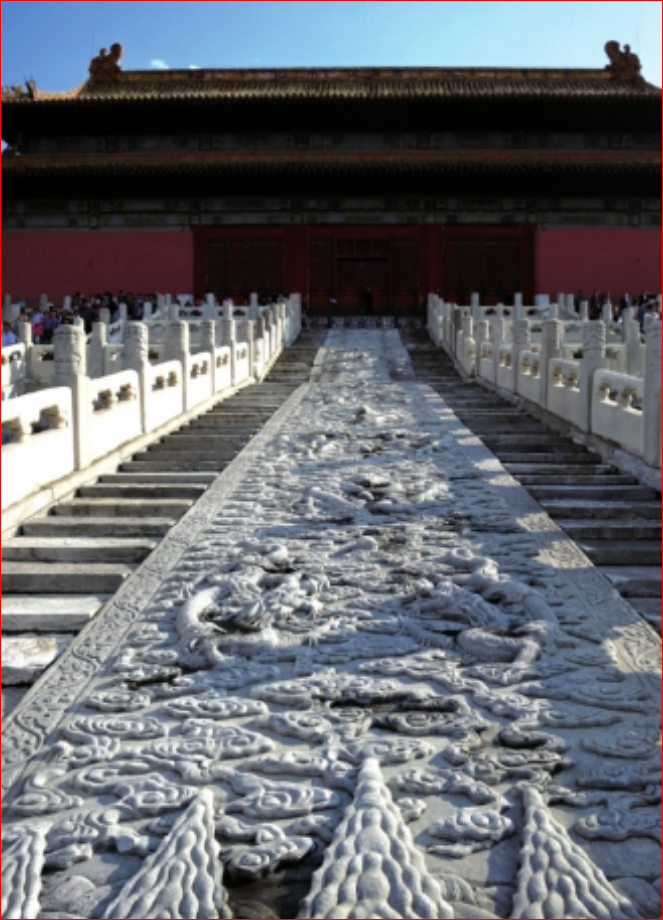
Stone carvings of Imperial Road behind Baohe Hall
The deep and mysterious thing and the six palaces.
The East-West six Palace is the place where the imperial concubines lived after the Ming and Qing dynasties, which are located on the east and west sides of Palace of Heavenly Purity, Jiaotai Hall and Kunning Palace. At present, most of the East six palaces have been changed to ancient art galleries, including Ming and Qing Arts and Crafts Museum, Ceramic Museum, Bronze Museum, clock Museum, painting Museum and Treasure Museum. The largest number of people visited the Treasure Museum and the Watch Museum.
The West sixth Palace is the residence of concubines in the Qing Dynasty, including Chu Xiu Palace, Yikun Palace, Yongshou Palace, Xianfu Palace, Changchun Palace and Taiji Palace. Empress Dowager Cixi lived here for most of her life, especially the Chuxiu Palace was the most important palace in her life. Out of personal needs, she connected the Chu Xiu Palace with the Yikun Palace in front of her. After dismantling the walls and doors that separated the two palaces, she built a new body Harmony Hall in place to serve as the connecting hall between the Yikun Palace and the Chu Xiu Palace.
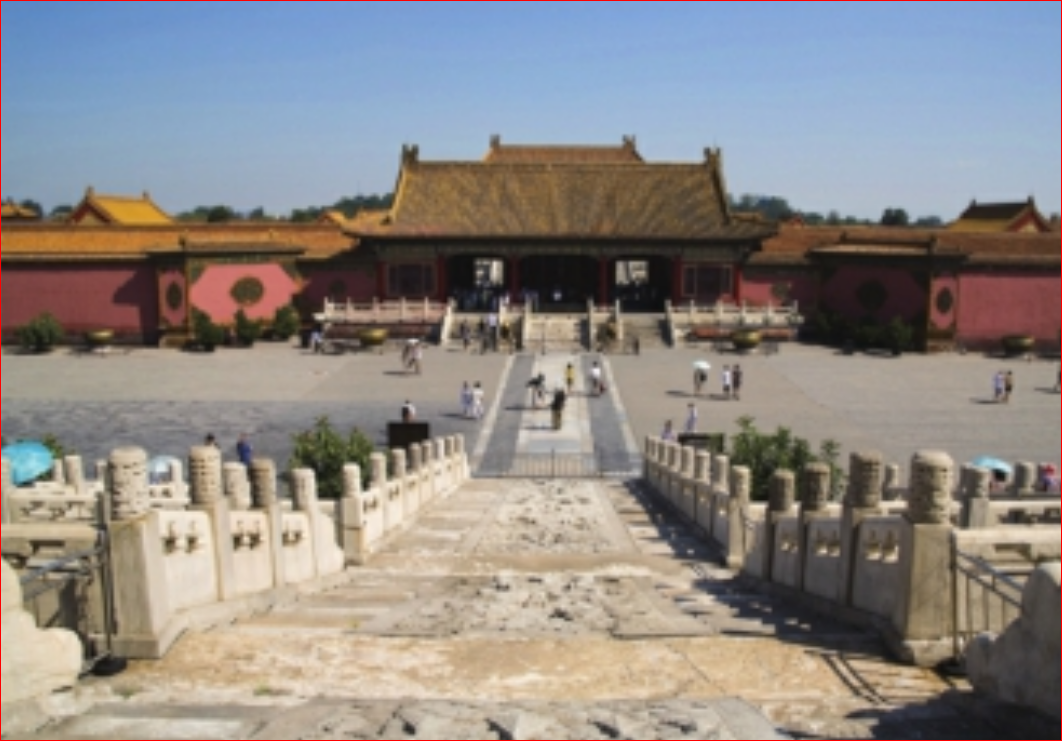
Qianqing Gate and its Square
The western part of the Imperial Palace is a “women’s world”. Until 2015, the palace door has been locked, the courtyard is deep, and the door is so mysterious that it covers the dusk. There is plenty of time for women in the palace, so there are many gardens and Buddhist halls, and a considerable number of the more than 70 Buddhist halls in the Imperial Palace are concentrated in the western region. As the main place of Buddha worship for the concubines, the Cining Palace has been renovated and officially opened on October 11, 2015. In addition, the Shoukang Palace where Zhen Huan lives in the TV series Legend of Zhen Huan will also be officially on display. Shan Jixiang, director of the Palace Museum, said that by 2020, the overall protection and renovation of the Palace Museum’s cultural relics will be basically completed, when the open area of the Palace Museum will reach 76%.
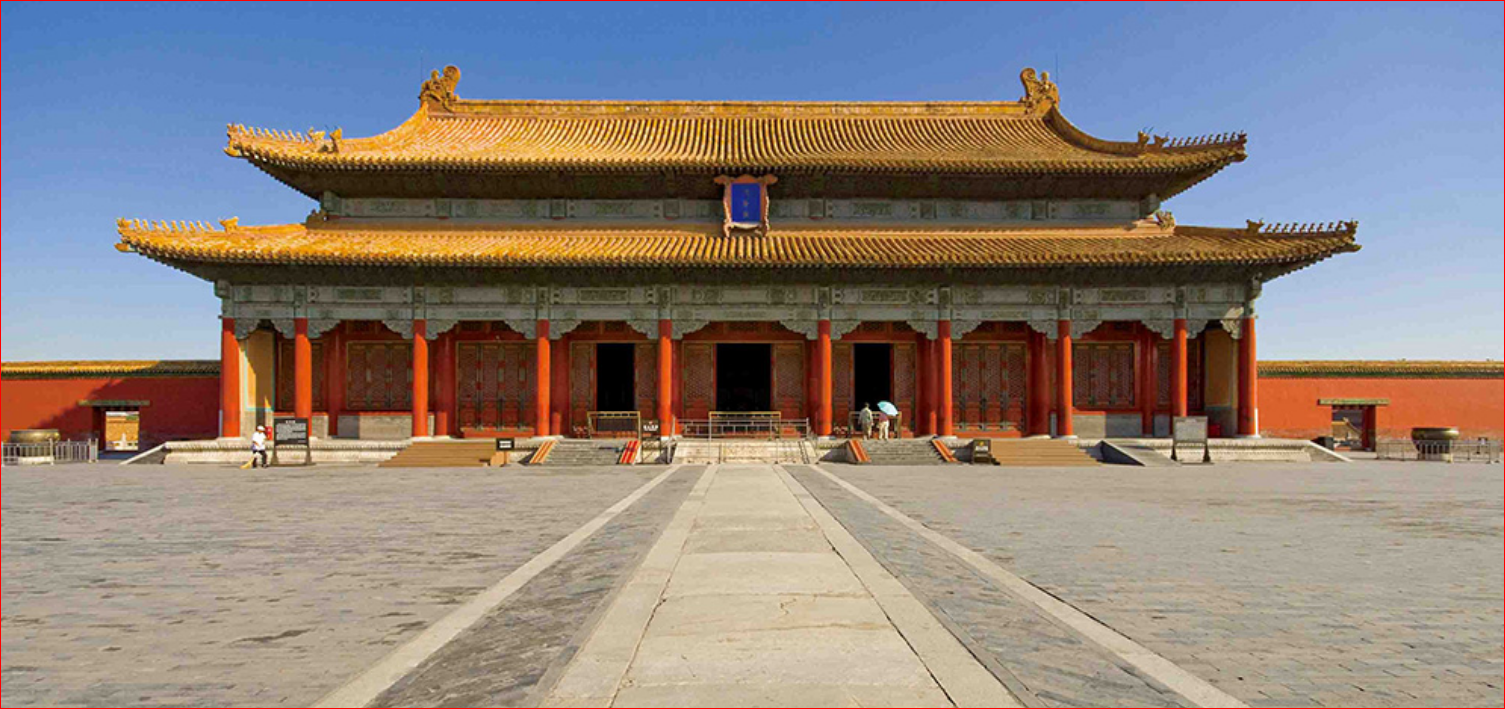
Baohe Hall
The origin of Shenwumen
From the Imperial Garden out of the Shunzhen Gate, you go to the Shenwu Gate, the north gate of the Forbidden City. Shenwu Gate was built in the 18th year of Yongle in the Ming Dynasty (1420). It was called Xuanwu Gate in the Ming Dynasty. Black Tortoise and Azure Dragon, Bai Hu and Vermilion Bird are the four ancient gods. Black Tortoise is in charge of the north, so the north gate of the ancient city is Xuanwu Gate. During the reestablishment of Emperor Kangxi in the Qing Dynasty, it was renamed Shenwu Gate because of avoiding Emperor Xuan Ye of Kangxi. Shenwu Gate was the back door of the palace and an important access control for daily access to the palace, through which the empresses of the Ming and Qing dynasties gave silkworm gifts. Emperor Puyi was expelled from the palace in 1924 and left by this door when he left the palace. Since the establishment of the Palace Museum in 1925, the “Palace Museum” plaque has been hung here.
There are so many scenery in the Imperial Palace that it is impossible to swim in one day. Out of the Shenwu Gate, the hustle and bustle of the city is coming, and the Imperial Palace behind him becomes more and more solemn and quiet.
China has a long history, and various feudal dynasties built palaces and capitals on a large scale, such as Chang’an and Luoyang in the Han and Tang dynasties, Kaifeng in the Northern Song Dynasty and Lin’an in the Southern Song Dynasty. However, as the famous palaces have been destroyed by repeated wars for a long time, we can only explore their faces from archaeological excavations and ancient historical books. In this sense, the Imperial Palace of the Ming and Qing dynasties in Beijing is still intact and is indeed the most precious historical heritage.
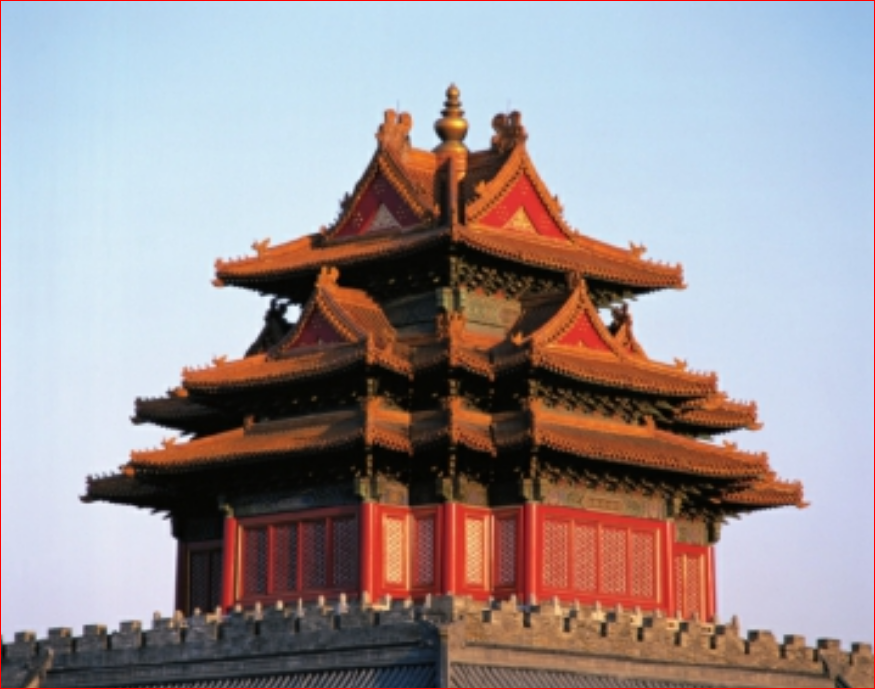
The Imperial Palace watchtower
Friendly Reminder:
1. Photography within the Palace Museum exhibition halls is not allowed with flash and tripods. Smoking is prohibited in the Palace Museum to avoid fire hazards.
2. If your luggage is too heavy, you can choose to store it. Stored luggage can be transported for free between the Meridian Gate (South Gate) and the Shenwumen (North Gate).